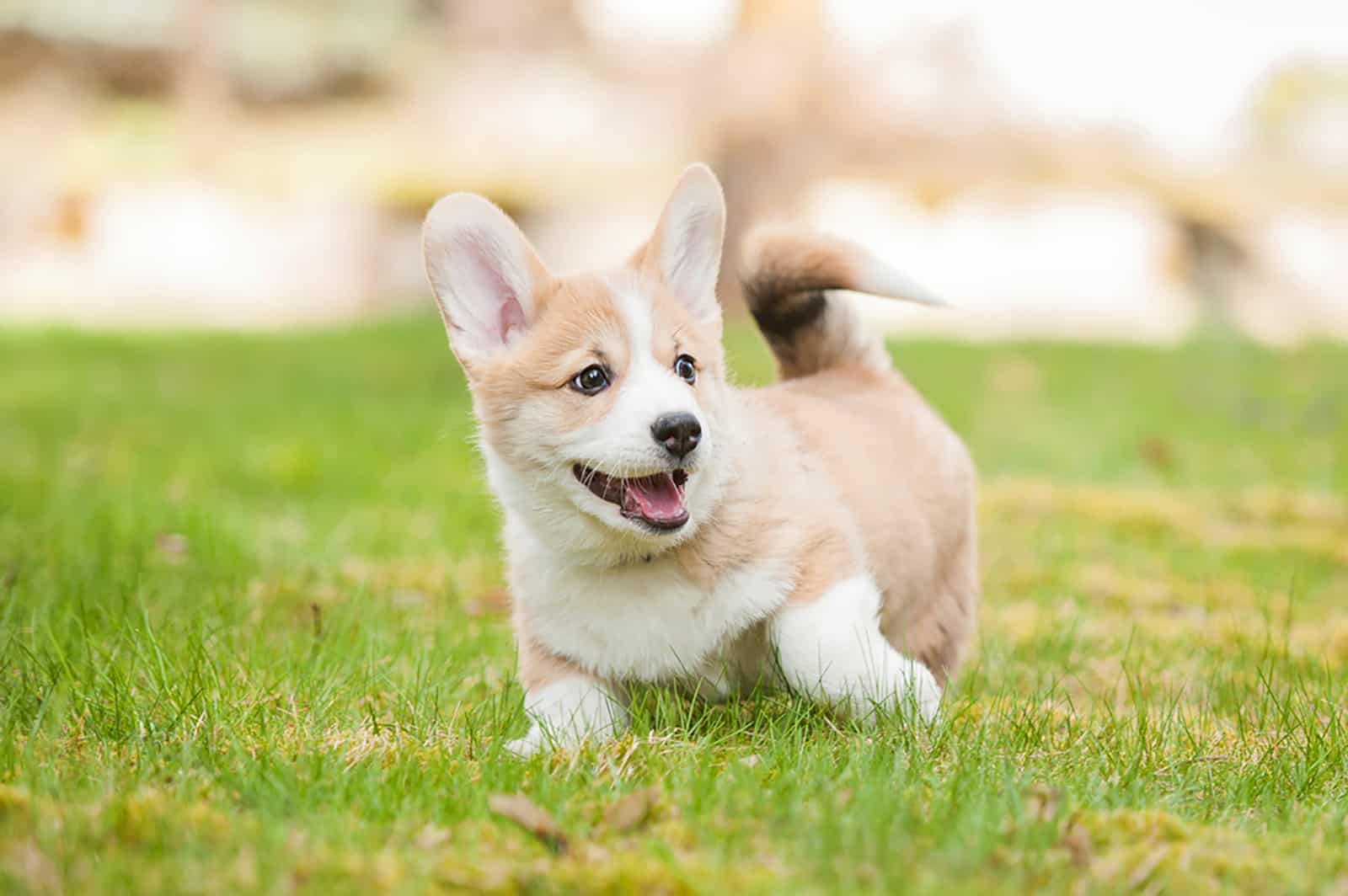Corgis are one of the most adorable dog breeds to ever grace planet Earth and they come in a variety of different Corgi sub breeds. They’re normally known to not have tails when seen in public, but do Corgis have tails normally?
Well, most Corgis tend to be born with tails, but the most commonly known Corgi breed, the Pembroke Welsh Corgi, usually has his surgically removed to better fit the expected breed standard nowadays.
After all, they’re either used as hunting or herding dogs and that tail can be a hindrance which is why it gets docked.
Some Corgis also end up born with something called ‘natural bobtail’ which means they already come with a stubby, docked tail.
Though, you may be surprised that there are a few different Corgi breeds who get naturally long tails and they get to keep them too.
Read on to find out what the deal is with Corgi tail and which specific types of Corgis get to keep theirs and which ones don’t, and why.
Corgis: Meet The Breed
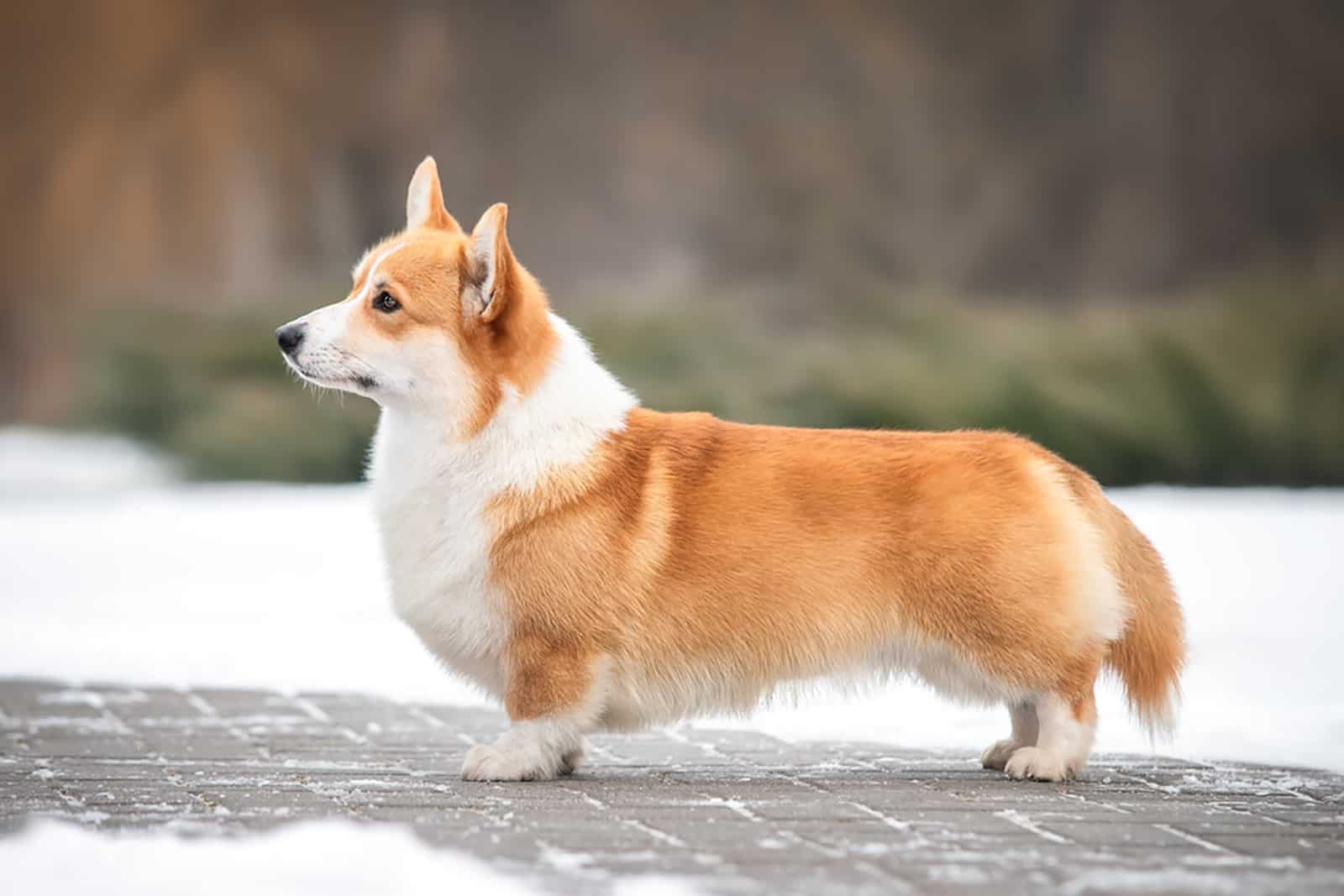
Before starting off, it’s best to get a little acquainted with the Corgi breed as a whole to get a slightly better understanding of the situation.
Corgi’s are small and adorable little dogs brimming with energy, though don’t let their appearance deceive you.
Back in the day, they used to be diligent herding dogs, rounding up livestock with ease thanks to their small forms that could weave between the hooves and the traffic.
They grow up to around 10 to 12 inches in sizes and end up weighing around 25 to 30 pounds on average with some exceptions here and there.
The Corgis come in a variety of different fur colors too, be it tan, merle, black, red, fawn, brindle or sable. Some can even be born without the white markings stereotypical for the breed.
While most are born with naturally long tails, some can be born as natural bobtails meaning they get stubby, short tails from the get-go thanks to a genetic mutation.
They may have short legs, but those same legs are incredibly muscular and limber, allowing him to easily move around any terrain.
The Pembroke Welsh Corgi has a decent amount of stamina too to withstand such arduous labor thanks to his sizable chest.
Corgis are incredibly intelligent too, easily adapting to the situation and reacting at a moment’s notice.
While intended as herding dogs, the Corgi is also a family-oriented one, ready to protect at a moment’s notice and unafraid of acting in defense of his loved ones.
The Pembroke Welsh is always eager for companionship and physical activity so they’re always a delight to be around and may even motivate their owners into a more active lifestyle.
They’re everything one would ever want in a dog in a compact and adorable package, the Queen’s Corgis are a prime example of that with how well behaved and yet still playful they always seem to be.
Do Corgis Have Tails? Does A Bobtail Count As A Tail?

To an extent, all of them do, however there’s a big difference between the two main types of Corgis, the Cardigan and the Pembroke Welsh.
The Cardigan Corgis are the ones that get the long fluffy tail, who, while similar to the Pembroke Welsh, aren’t the same dog breed at all.
I know, the name makes it somewhat deceiving, but the two are of different origin, though more on that a little later.
The Pembroke Welsh Corgi on the other hand has it stated in the AKC breed standard that their tails need to be docked for safety and for the purposes that they were bred for, hunting and herding.
The Cardigan Welsh AKC standard, on the other hand indicates that their tails stay on and are set lower than their actual body line, at least underneath the hock.
And, while technically docked to a stubby little thing, the Pembroke Welsh Corgis tail is still technically a tail, albeit just a little nub of one that makes his butt wiggle around.
Also, as stated before, some Pembroke Corgi puppies can be born with ‘natural bobtail’, a mutation that doesn’t have them grow a tail in the first place.
It purely depends on whether the gene for it is dominant or recessive in the pup.
However, it is a trait that’s becoming quite popular as of late simply due to the stricter rulings on tail docking which in and of itself is a rather cruel practice unless done for health reasons.
How Are The Two Corgis Of Different Origin?
Well, the answer is pure and simple, the two Corgi breeds have completely different ancestries and bloodlines.
The Cardigan Corgi stems from the bloodline of the German Teckel, nowadays known as the Dachshund, albeit one that took a different path in its evolutionary line.
Meanwhile, the Pembroke Welsh Corgi traces its bloodline all the way to the Nordic Spitz, a dog breed that almost went extinct back in WW1 but has since made a resurgence and is in a more comfortable spot now.
How Are Their Tails Different?
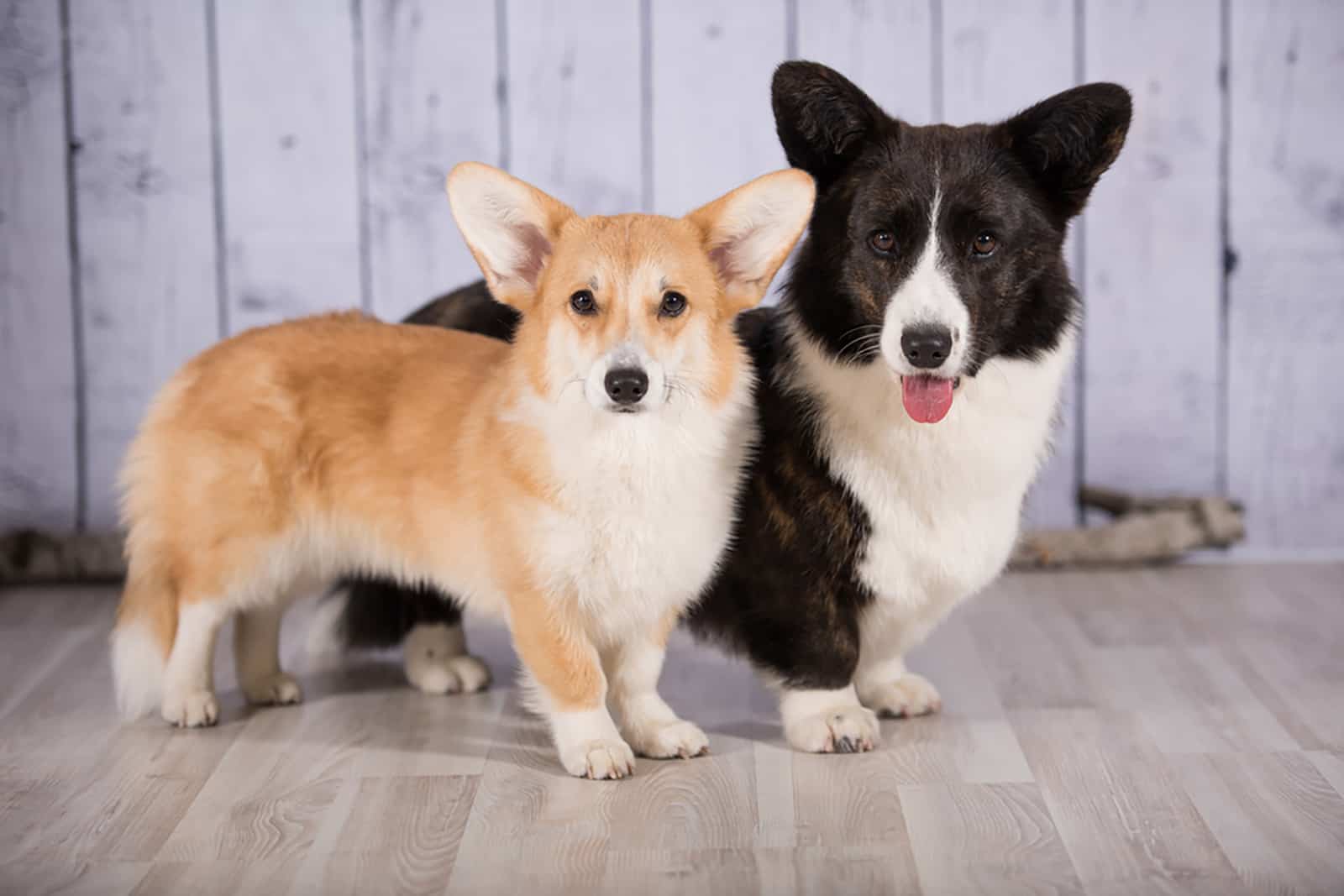
While the two breeds of Corgi do have different ancestors, they still wound up looking pretty similar.
That said, it’s easy to tell one from the other most of the time given the tail situation, but if the Pembroke Corgi has his natural tail wagging above his but while he struts around on his short legs next to a Cardigan one, it may be harder.
However, there are a few telltale hints that may make it easier on you.
For the usual Corgi of Wales, their tail, even at full length, is relatively short, but has a lot of fluff on it.
They’re also a lot higher up, past the hock, or even go as far as curling all the way toward their backs.
For the Cardigan Welsh Corgi however, the tail is longer and is carried lower, under the hock usually.
While their specific breed standard allows for tails to not get docked in the US, it should by no means be curving toward your dog’s back.
This comparison may mean little in the US given our breed standards for both of these lovely working dogs, but if you go anywhere abroad, you’ll be able to spot the difference with ease now.
Why Do Most Corgis Have Their Tails Docked?
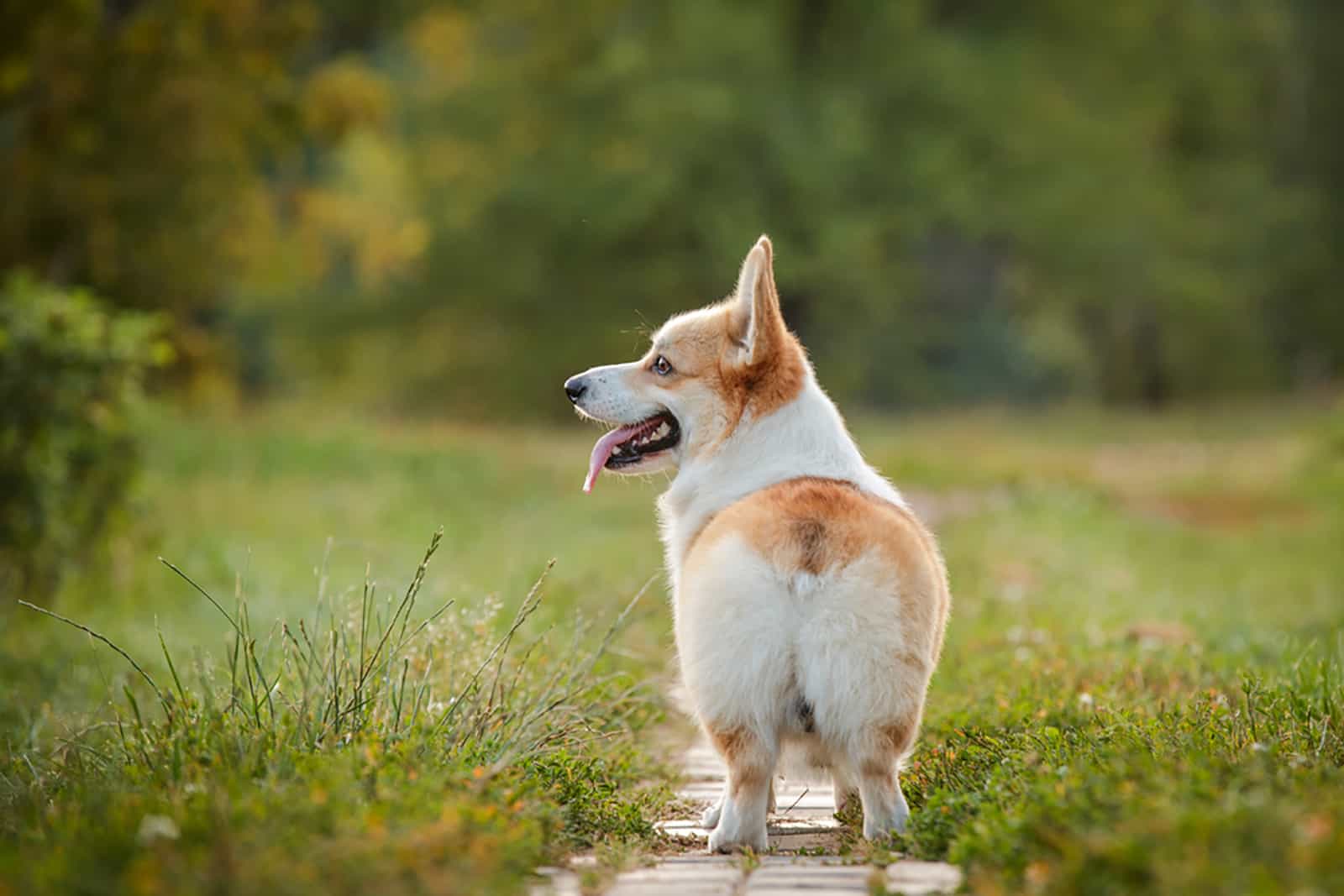
There are 3 major reasons as to why a large number of Corgis end up not having a tail. While I’ve already gone through a couple, I’ll list them here in a bit more detail.
1. Herding
While it may be surprising that such a small breed is used as a herding dog, it’s been going on for quite some time now.
The speedy energetic Corgi was perfect for the role in keeping livestock rounded up and on track as well as helping protect them from wild animals who’d make prey of their herd.
Their size was also a key factor, believe it or not, as that allowed them to dodge the livestock should it ever get unruly and start kicking around, giving them the nimbleness that they traded out for the raw strength of larger dog breeds.
So, over time, as breeders do, they’d selectively breed the Corgis and adapt their features as they saw fit, trying to develop the specific, desirable traits for the purpose of being a cattle herder canine while rooting out the bad ones.
One of the main traits was the aforementioned size, but the tails played a part in that too.
The tail didn’t serve much of a purpose and ended up being more of a hampering tool rather than a helping one.
Most Corgis would often have their tails injured or completely crushed by cattle and other livestock throughout the herding lifestyle.
Getting caught under a hoof would spell disaster and getting stuck like that could lead to further, more serious injury to the poor fellow.
This is when the docked tail standard began and has been kept up since for that very reason. Not to harm the poor Corgi, but to help better safeguard it in performing its duty.
And this leads us to the next reason, which is breed conformation.
2. Breed Conformation
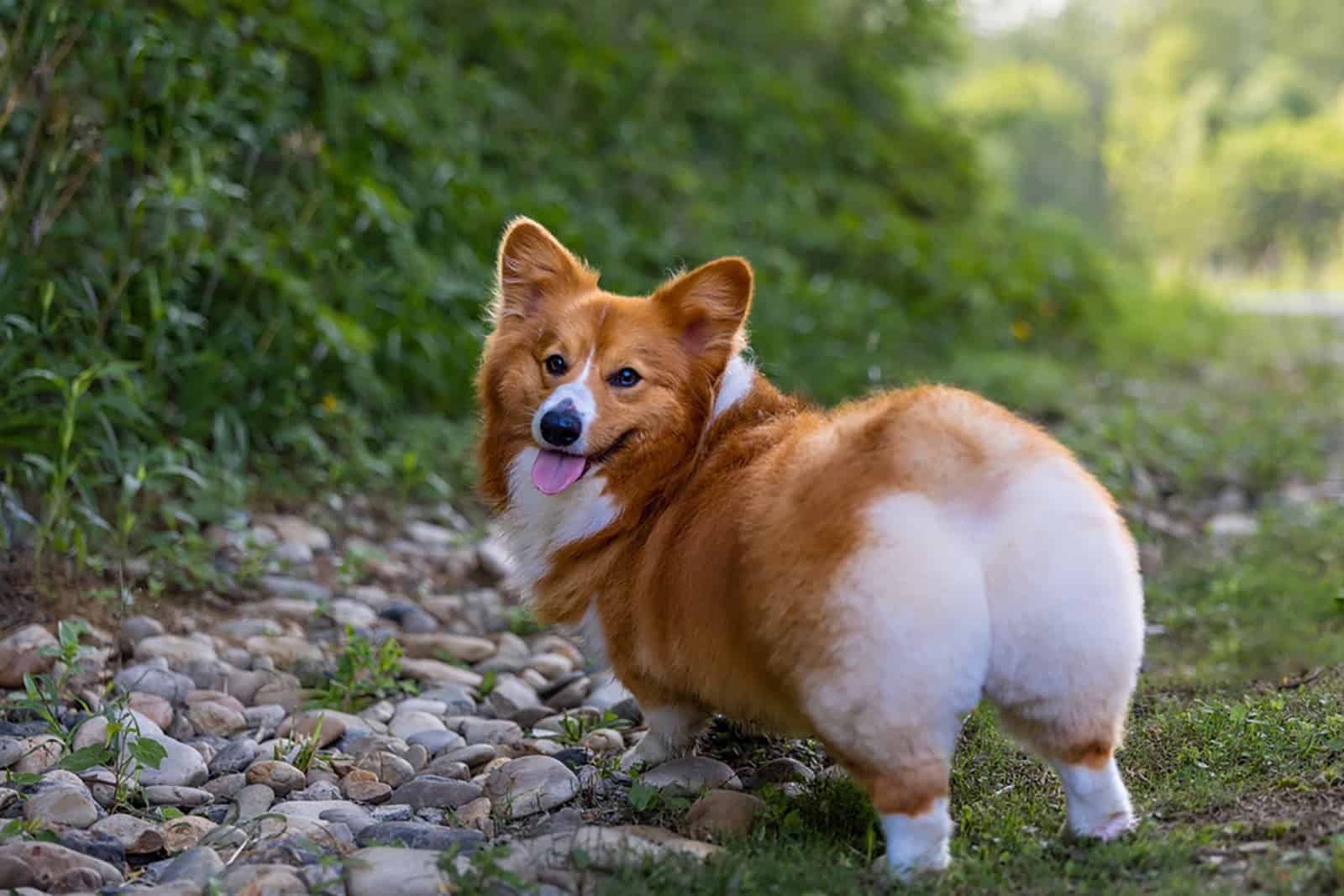
If you are to compete in some dog show or similar event, you’d have to conform your dog to the breed standard of various kennel clubs, the most notable one in the US being the American Kennel Club (AKC for short).
If you don’t adhere to the rules, you’ll usually end up not being able to enter, which isn’t the biggest of deals, unless you’re someone who enjoys going to these shows, in which case you’ll sadly have to.
The same goes for buying from a breeder that already sells tailless Pembroke Corgis as he’ll most likely follow the breed standard to achieve a higher rating.
There will always be a few outliers, of course, but those don’t tend to be the most reputable breeders and often end up being the ones to run puppy mills or similarly inhumane businesses, so I’d be wary.
Of course, if you mate your own Pembroke Welsh Corgi and end up having a litter of pups, you can always choose to keep their tails if you want to.
However, you’ll still end up dealing with the mutation of a natural bobtail every once in a while which is the third, natural reason for Corgis to end up with stubby tails.
3. Natural Bobtail
A natural bobtail is a genetic mutation that happens in a number of different breeds, not just the Pembroke Welsh Corgi.
Nevertheless, it describes an occurrence where the puppy’s tail comes out naturally docked or just stubby depending on the prevalence of the gene.
Depending on the breed of dog, some get to have longer while others get to have shorter tails, as much as the gene will allow anyway
As far as the breeds of Corgis go, the Wales variant is the only one who has this gene pop up every now and then.
Other dog breeds that end up with this phenomenon are:
1. The Australian Cattle Dog
2. The Swedish Vallhund
3. The Austrian Pinscher
4. The Brazilian Terrier
5. The Pyrenean Shepherd
6. The Mudi
7. The Karelian Bear Dog
8. The Danish Farmdog
9. The Catahoula Leopard Dog
10. The Polish Lowland Sheepdog
11. The Croatian Sheepdog
12. The Brittany Spaniel
13. The Savoy Sheepdog
14. The Australian Shepherd
15. The Bourbonnais Pointer
16. The Jack Russell Terrier
17. The McNab
What Does This Gene Do Exactly?
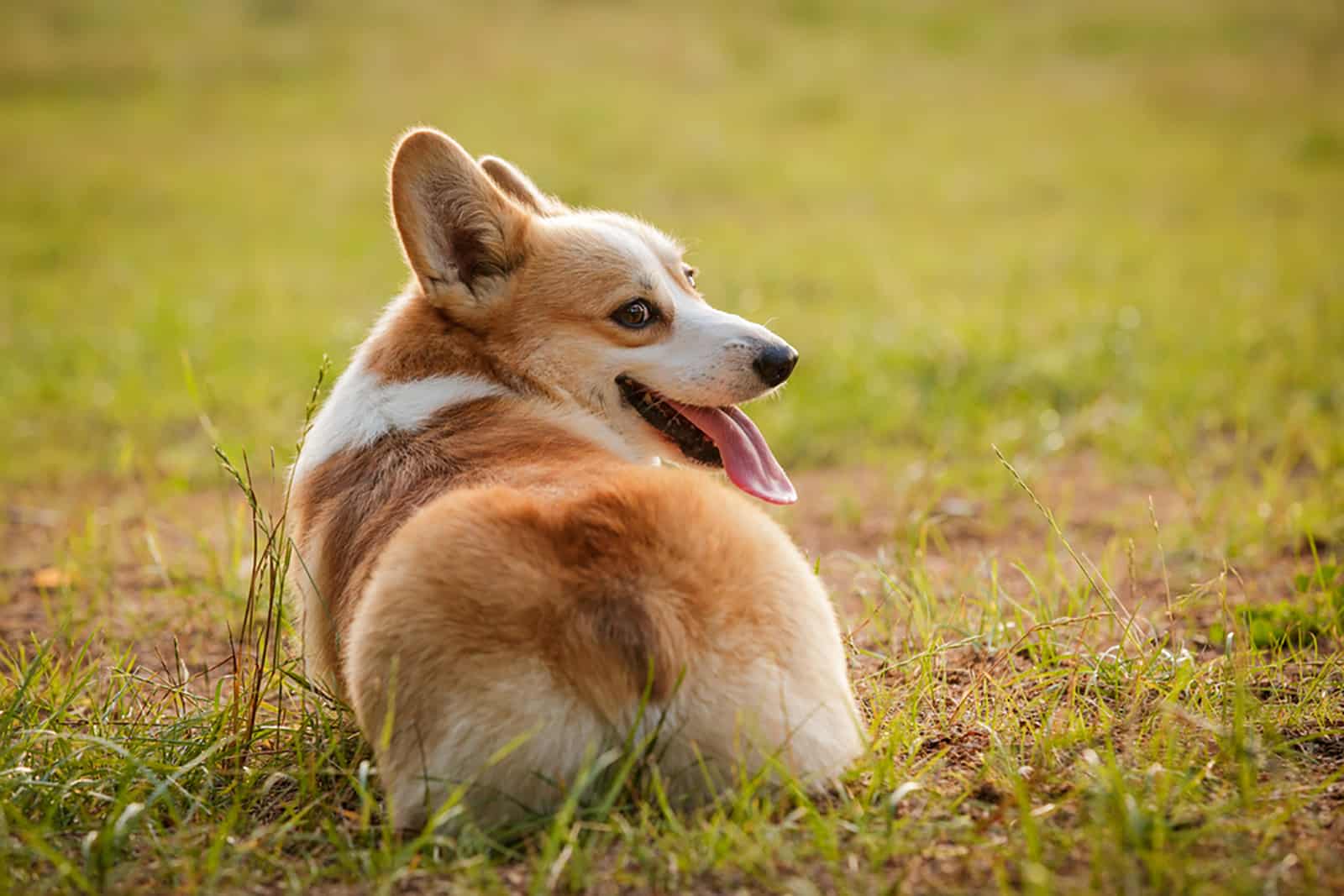
The natural bobtail occurs when the T gene locus is altered in a specific way which gives your doggo a strong predisposition toward growing the bobtail.
The standard allele for the T locus is the N allele which, when paired as an N/N genotype, will end up growing a normal-sized tail while the BT allele indicates the strong potential for the natural bobtail to pop up.
This is signified by the N/BT genotype, and is by no means a sign that there’s something wrong with your precious pooch.
Some of you may wonder what the BT/BT pairing stands for. Unfortunately, that’s usually the sign of a doggo who won’t even reach the birthing process.
The potency of the mutation is different from dog to dog which also determines the length of their tail.
While some may see it as a detriment, modern breeders see bobtail Corgi breeding as a great future prospect for the health and safety of their short legged friends as it’ll prevent a lot of painful tail docking procedures naturally.
Do The Breed Standards For Corgi Tails Differ Worldwide?

They, in fact, do.
There are those who are leaning toward a more progressive route where they accept Corgis with full length tails.
However there are also the more traditionally oriented ones that stick to the old ways regardless of the fact that most Corgis aren’t even used for hunting or herding animals anymore, but are just kept as pets.
While a long tail on your Corgi won’t earn you any direct demerit or a straight up disqualification in any event backed by the AKC, CKC or the UKC respectively, the tail itself will mess with the ideal Corgi look.
This may end up costing you points if you’re looking into showmanship.
As far as the three major English Kennel Clubs are concerned, these are their stances on it in a bit more detail:
The American Kennel Club, or the AKC states, as said earlier in the article, that the tail should be kept as short as it could be, or outright docked.
While it won’t punish a long-tailed Corgi directly, it’s clear that it won’t be looked at through the same lens as his stubby tailed brethren.
It’s also disheartening to hear that they still approve of the practice of tail docking and declawing or other similarly hurtful acts for the sake of keeping a breed standard up.
The United Kennel Club, or the UKC is of a different stance. They’ll allow registration of Corgis with their natural tails regardless of length.
They won’t penalize pet owners in dog shows either as they respect the different rules and practices of other countries and kennel clubs which is about as good as you can get it really.
The Canadian Kennel Club, or the CKC allows full freedom of choice in regards to the matter, believing that Corgi’s shouldn’t be judged by their tails alone and that some need it docked for one reason or another.
They leave it up to the Corgi owner in question, but strongly advise going to a certified specialist on the matter for a proper surgical maneuver that’ll be the least painful for your canine companion.
Things You Need To Know About Docking A Corgi’s Tail And Tail Docking In General
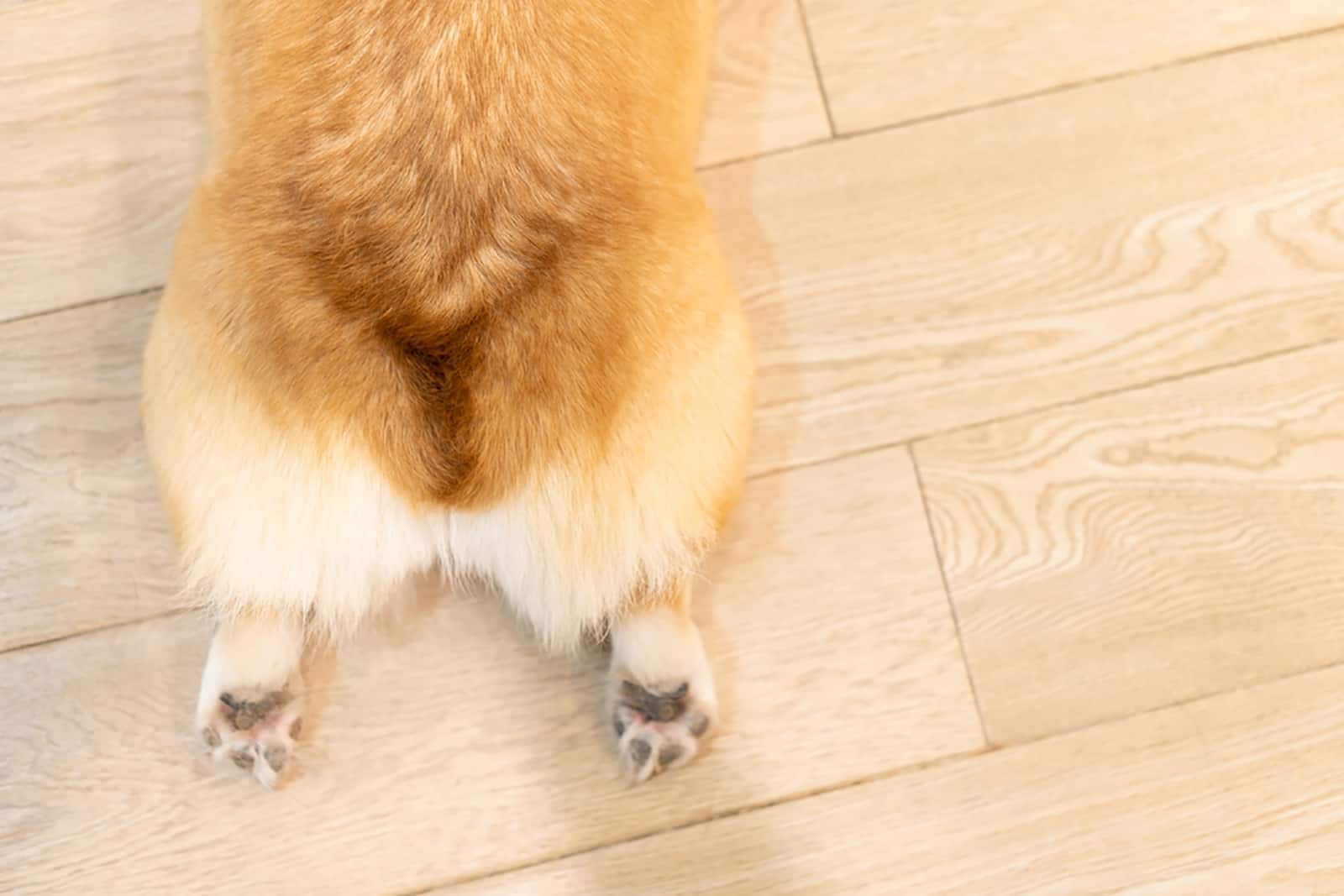
As stated before, you don’t need to dock the tail of your Corgi if you don’t want to, especially if you’re just looking to have him around as a pet and friend.
Unlike with some other breeds, their tails won’t pose an actual risk to their well being as they would have a few odd centuries ago.
Nowadays it’s more of a choice than a necessity and you’re the one who dictates it.
But are there still any benefits to docking? Does it hurt? Here are a few of the most common questions asked regarding tail docking and their answers.
When Is The Tail Docking Procedure Performed On Corgis?
The procedure is usually performed only a few days after birth.
It’s done at such a young age since the nervous system of your furry best friend doesn’t develop fully yet so the pain suffered is minimal.
This prevents any potential trauma and minimizes risk of any complications that may occur with the procedure.
How Exactly Is Tail Docking Done?
Sadly, there’s no properly painless way of doing this as it still involves cutting off a part of the body.
There are two different methods which are utilized, both equally gruesome in their own way.
The first one is called banding, a process where the person performing the procedure takes a rubber band and wraps it tightly around the tail to cut off blood circulation to it.
Then it’s left until muscle necrosis slowly creeps in and does the rest of the job, causing the tail to falter and fall off with time.
That said, this is obviously not a clean method and it involves a whole lot of risk regarding potential infection from such a maneuver as well as abnormal growth or general deformation of the stub of the tail itself.
This could lead to further, potentially serious health issues with your Corgi which shouldn’t be neglected.
The second process is a lot cleaner and quicker, but it’s also a lot more painful to a degree, surgery.
Specifically, it’s cutting the tail off with a sharp and precise tool.
Most vets and other certified professionals choose to utilize surgical scissors or, preferably, a scalpel to cut through the tail cleanly, cartilage, tendons and muscle included.
It’s done quickly and correctly with a brief jolt of pain after which the remaining stub gets bandaged up to allow it to heal back up.
It’s a quick process, though the recovery does take some time, but thankfully, given the age at which it’s done, it shouldn’t hinder your doggo too much.
Does Tail Docking Hurt?
There’s no doubt that tail docking hurts, much like it would for anyone to lose a limb.
Thankfully, the process is done at an extremely early age, only a few days after birth, to prevent any stronger pain as the nervous system by that time hasn’t developed yet.
Don’t get me wrong, the Corgi puppies will still feel pain, but it won’t be as bad as it might have been had it been done later in the Corgi’s life.
It’s the most humane option available and is best considered at the time.
Is It Mean To The Dog?

Personally, I think that it is and I’m of the thought that it shouldn’t be done at all nowadays unless absolutely necessary.
Hopefully the AKC adapts to the idea soon enough as the other major Kennel Clubs have.
As of now, the act of docking dog tails has only been outlawed in two states, Maryland and Pennsylvania. Hopefully the others follow soon.
But, there are those who advocate that it’s perfectly okay for the reasons I’ve mentioned prior, how the dog’s nervous system hasn’t been fully developed at the time.
While they’re correct to a degree, it’s still involuntary and it doesn’t save the dog’s life any more like it used to back in the day as Corgis aren’t used as herding animals much anymore.
If some livestock farms do utilize them, then it should be performed for that specific purpose, or in case of an obvious emergency or health risk, but otherwise not.
It’s been a heated debate for the longest time and has yet to reach a conclusion here in the US, hopefully one does soon.
What Is The Significance Of A Dog’s Tail?
While a more broad question that relates to all dogs, it’s no different for Corgis as it is for any other breed.
Tails function as a sort of counterweight. They help provide balance to the animal when he’s moving about by shifting to the opposite side of his body’s tilt to keep him upright.
It’s especially useful for dogs that handle rough and uneven terrain for that very reason.
Damage it or remove it completely, and that balance shifts dramatically.
Since When Has Tail Docking In Dogs Been A Thing?
The practice has existed since the times of Ancient Romans, a few thousand years back, though for vastly different reasons.
They used to dock their dog’s tails since they believed it would help stave off rabies.
Obviously a misguided endeavor, but it has since been utilized for many different reasons, some more credible than the initial one.
Are Dogs Able To Survive When They’ve Had Their Tails Removed?
Of course they are. Tails don’t contain any vital organs for survival, it’s all just tendons, cartilage and muscle.
While the initial shock, if done later, will be present, it usually doesn’t last and your dog will quickly adapt as if nothing had happened prior.
Does Every Corgi Get His Tail Docked?
As mentioned earlier in the article, nowadays it’s a choice if you’re the one breeding your own Corgi litter, so not every Corgi needs to get his tail docked.
While you’ll usually get breeders who dock the Corgi’s tails by the time you even contact them, you can always call on one who’s expecting a fresh litter and reserve a pup for yourself that won’t undergo the docking process if you so choose.
This will, however, mean that you’ll have to commit to your decision and likely pay upfront, but it’s a small price to pay, really.
If you don’t want to make the commitment just yet, you can always order from Corgi breeders in Europe or Canada as they’re likely to have purebred Pembroke Welsh pups without docked tails in stock.
You may need to pay shipping fees, but it clears you from the commitment.
However, when it comes to the question of should you or should you not dock your best dog friend’s tail, then the choice is up to you.
Just make sure to not wait too long as it’ll be a lot more painful when he’s an adult dog.
In Conclusion
So, do Corgis have tails? They do, in fact most are born with tails as is, but current breed standards, at least in the US, delegate that they should be docked.
Natural bobtails exist too, but there are Corgis who keep their long tails too. It’s up to you to decide which is best for your doggo. I trust that you’ll make the best decision for him. Until next time.
RELATED LINKS:
• The 3 Most Reputable Corgi Breeders In Ontario For 2022
• Corgi Breeders In The UK: Best 4 Breeders Of This Royal Pup!
• Corgi Growth Chart: How Big Do Corgi Puppies Get
• How Much Do Corgis Cost? Prices And Expenses Calculated
• Male Vs Female Corgi – Is There A Difference? What You Need To Know
